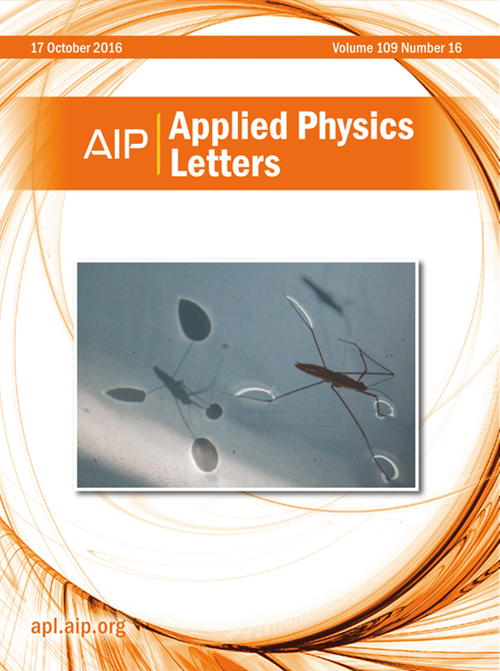定向纳米晶氧化硅接触为硅太阳能电池提供了良好的钝化性能
IF 3.5
2区 物理与天体物理
Q2 PHYSICS, APPLIED
引用次数: 0
摘要
氧化硅(SiOx)通常用于为晶体硅(c-Si)太阳能电池提供强大的钝化;然而,传统的SiOx钝化触点通常是无定形的和有缺陷的,电导率低。在本研究中,我们引入了一种溶胶结晶诱导(SCI)方法,该方法可以在c-Si表面上生长致密、缺陷少、垂直取向的SiOx (v-SiOx)钝化触点。与a-SiOx:H相比,v-SiOx表现出更高的载流子浓度和垂直导电性,形成了高效的电子选择传导触点。通过优化v-SiOx纳米晶触点,我们实现了隧道氧化物钝化触点(TOPCon)太阳能电池的开路电压(VOC)为746 mV,短路电流密度(JSC)为41.54 mA cm−2,功率转换效率(PCE)超过26.01%。SiOx钝化有望为高效c-Si太阳能电池的进一步发展提供重要支持,无论是在TOPCon还是硅异质结(SHJ)技术中。本文章由计算机程序翻译,如有差异,请以英文原文为准。
Oriented nanocrystalline silicon oxide contact enables excellent passivation for silicon solar cells
Silicon oxide (SiOx) is often used to provide powerful passivation for the crystalline silicon (c-Si) solar cells; however, conventional SiOx passivated contacts are typically amorphous and defective, with low electrical conductivity. In this study, we introduce a sol-crystallization induction (SCI) method that enables the growth of compact, less defective, and vertically oriented SiOx (v-SiOx) passivated contacts on the c-Si surface. Compared to a-SiOx:H, v-SiOx demonstrates enhanced carrier concentration and vertical conductivity, forming an efficient electron-selective conduction contacts. By optimizing the v-SiOx nanocrystalline contact, we achieved an open-circuit voltage (VOC) of 746 mV and a short-circuit current density (JSC) of 41.54 mA cm−2 for the tunnel oxide passivated contact (TOPCon) solar cells, resulting in a power conversion efficiency (PCE) exceeding 26.01%. The promising SiOx passivation is expected to offer a significant support for the further development of high-efficiency c-Si solar cells, both in TOPCon and silicon heterojunction (SHJ) technologies.
求助全文
通过发布文献求助,成功后即可免费获取论文全文。
去求助
来源期刊

Applied Physics Letters
物理-物理:应用
CiteScore
6.40
自引率
10.00%
发文量
1821
审稿时长
1.6 months
期刊介绍:
Applied Physics Letters (APL) features concise, up-to-date reports on significant new findings in applied physics. Emphasizing rapid dissemination of key data and new physical insights, APL offers prompt publication of new experimental and theoretical papers reporting applications of physics phenomena to all branches of science, engineering, and modern technology.
In addition to regular articles, the journal also publishes invited Fast Track, Perspectives, and in-depth Editorials which report on cutting-edge areas in applied physics.
APL Perspectives are forward-looking invited letters which highlight recent developments or discoveries. Emphasis is placed on very recent developments, potentially disruptive technologies, open questions and possible solutions. They also include a mini-roadmap detailing where the community should direct efforts in order for the phenomena to be viable for application and the challenges associated with meeting that performance threshold. Perspectives are characterized by personal viewpoints and opinions of recognized experts in the field.
Fast Track articles are invited original research articles that report results that are particularly novel and important or provide a significant advancement in an emerging field. Because of the urgency and scientific importance of the work, the peer review process is accelerated. If, during the review process, it becomes apparent that the paper does not meet the Fast Track criterion, it is returned to a normal track.
 求助内容:
求助内容: 应助结果提醒方式:
应助结果提醒方式:


